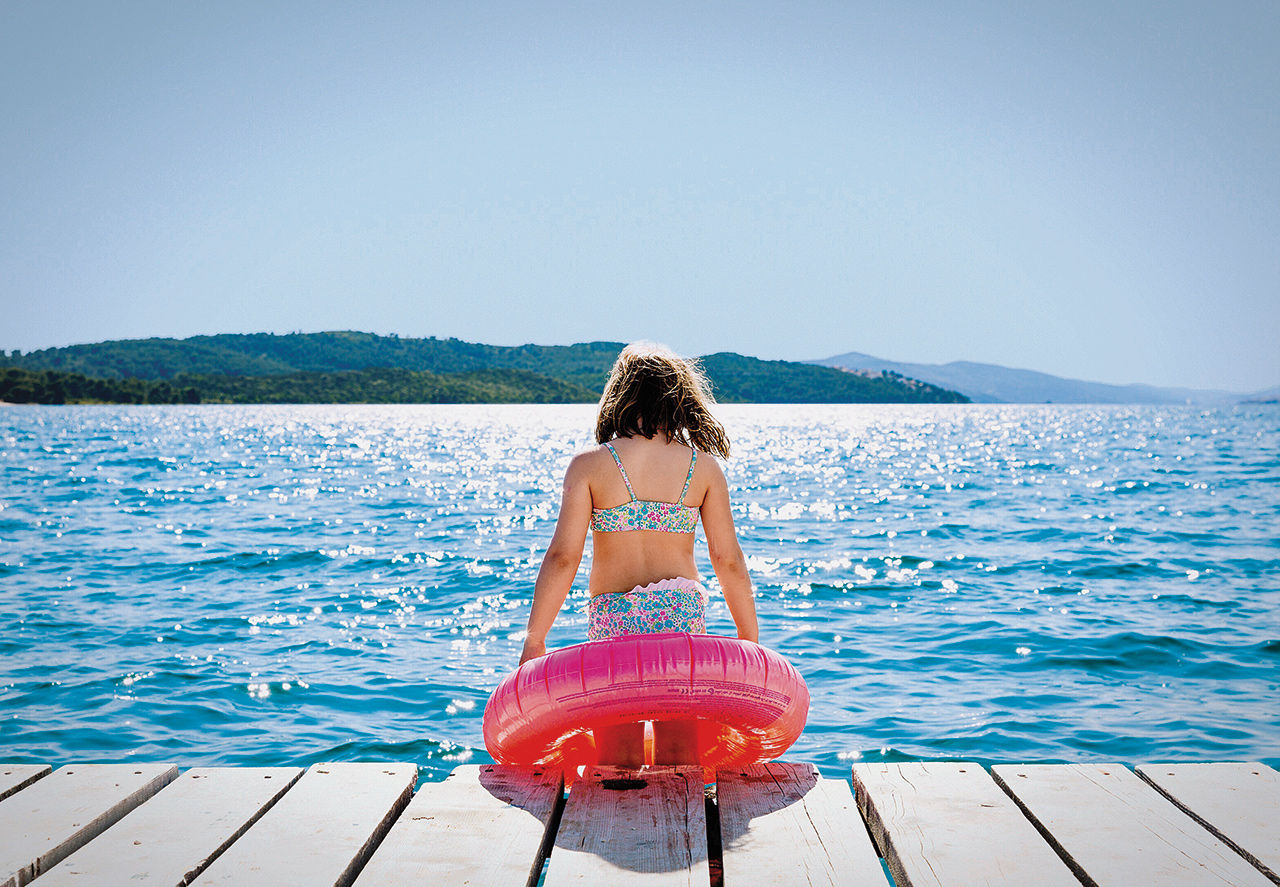Drowning is the leading cause of accidental death for kids between the ages of 1 and 4, with more than 3,000 children drowning every year. One in 10 of those deaths occur in the bathtub. Shocked by these tragic statistics, mother and swimming coach Michelle Lang ’04 penned A Mermaid’s Guide: Empower Your Child in Water and in Life to help teach parents simple techniques to keep their children safe in the water.
- Breath Control — Breath control is the most important skill children should learn prior to beginning swim lessons, Lang says, and it can be taught when children are just a few months old, starting in the bathtub. Prepare your baby for his first underwater experience by teaching him to hold his breath as you gently trickle or pour water over his head.
- No Mouth Bubbles — The mouth bubbles your child blows while underwater are composed of the air inside her body — air that is actually keeping her afloat. Tell your child that her body is like a balloon. Lang suggests having your child take a deep breath, close her mouth and go underwater — eyes open, but mouth closed.
- Gentle Submersions — Start by teaching proper breath control in the bathtub and then, once in the pool, teach your child to hold his breath and go underwater for one second. Slowly build his breath control to five seconds. It’s vital that your child understands how to hold his breath properly to avoid drinking or inhaling the water.
- Floaties Are Not Lifesaving Devices — Infants can drown in just an inch of water in less than 30 seconds. Never leave your child alone in the bathtub or the swimming pool. Drowning happens silently. Keep your eyes on your child at all times when she is around water.
- Increase Exposure — Teaching your child to be comfortable in water could one day save his life. With regular practice and routines, even the most resistant children will eventually overcome their initial fear and learn to love the water.




Reader Responses
No one has commented on this page yet.
Submit a Response